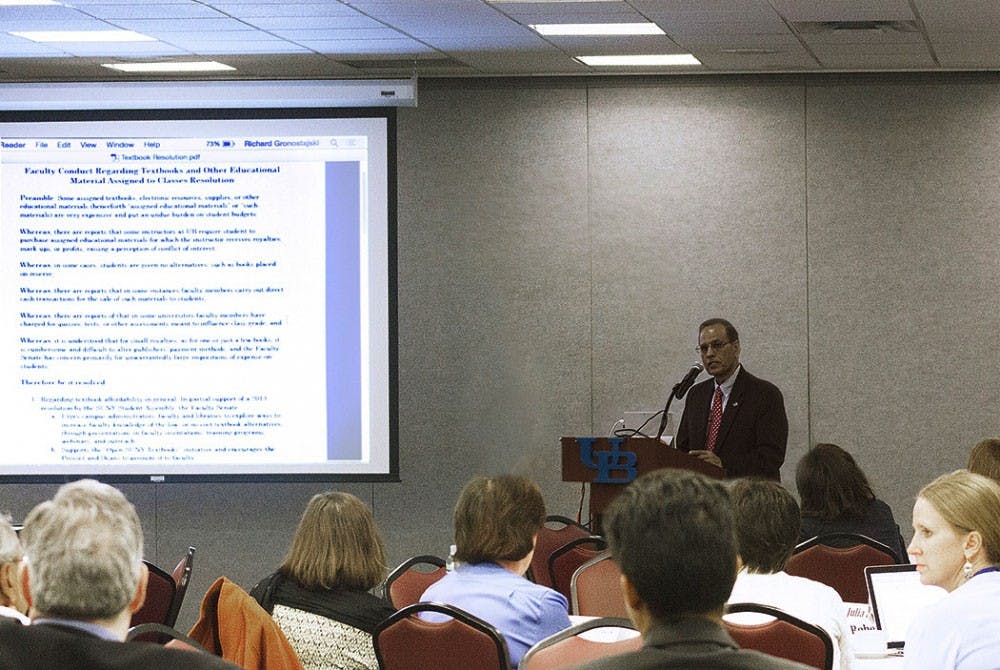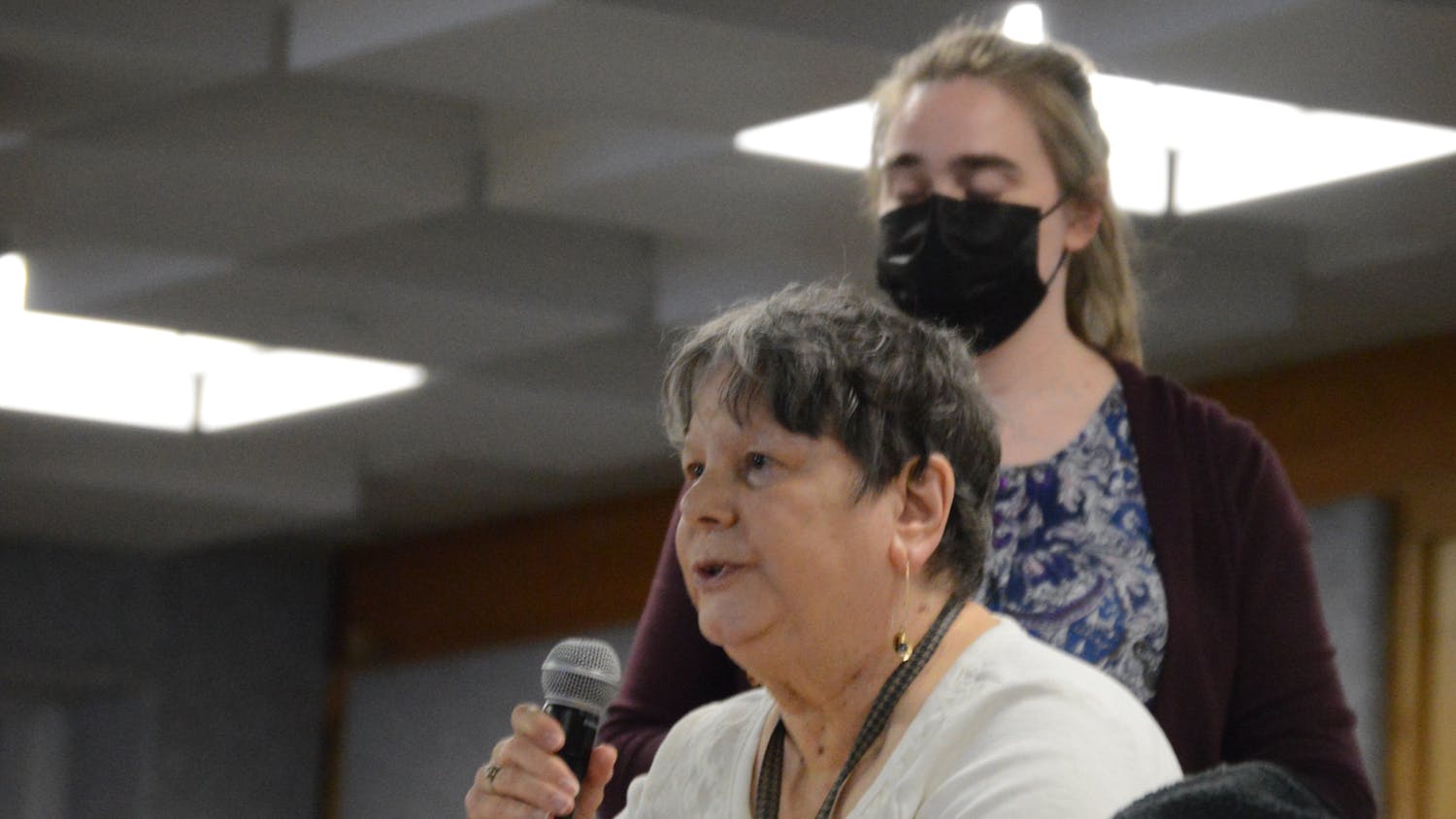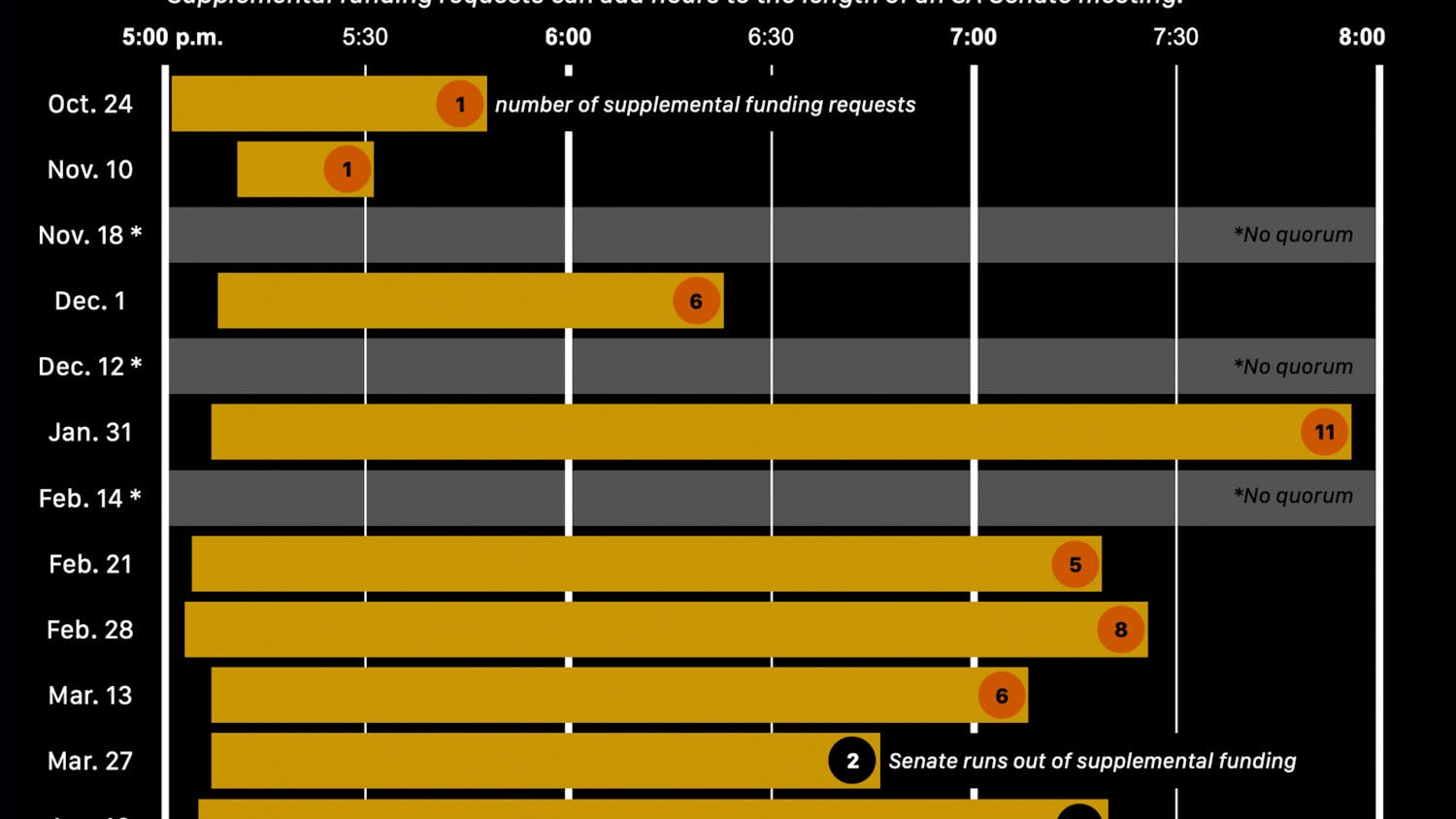Teresa Miller said there has been progress in the realm of diversity and inclusion in universities like UB, but there is still much work to be done.
The Faculty Senate discussed topics of concern within the university, including the controversial “White Only” art project and the UB home ownership program in the Center for Tomorrow Tuesday.
Miller, vice provost for equity and inclusion and a law professor, delivered a presentation to the senate regarding diversity and inclusion.
“Inclusion means access, people being able to come to UB. It means getting them through their programs. It means supporting students while they’re here [and] it also means making them feel welcomed,” Miller said.
The SUNY Board of Trustees passed a resolution in September to help make SUNY the “nation’s most inclusive university system in the nation,” according to Miller.
An important aspect of this resolution is that every campus will have a chief diversity officer.
Miller said this is a “bold and ambitious” endeavor with respect to diversity.
She said SUNY is collecting data at a statewide level on having students identify sexual orientation, gender identity, veteran status and various other factors that the SUNY trustees felt they did not have enough information on.
She said the idea of using the words “equity and inclusion” is to take a step from “diversity as a goal.”
“We see evidence of diversity in having a great variety of races, ethnicities, religions, sexual orientation, but equity and inclusion means we’re not going to have a ‘check the box’ kind of approach,” Miller said.
Miller spoke of the university’s recent initiative to include a required designated culture course beginning with next year’s freshmen.
Diversity and inclusion have been topics on campus since graduate fine arts student Ashley Powell sparked controversy for her “White Only” and “Black Only” signs that she hung around campus as part of a class project in September.
“The idea is to increase cultural competence and expose our students to the types of issues and skills that they’re going to need to be effective members of the increasingly diverse workforce.”
Miller addressed the recent racial tensions and protests at universities across the country like the University of Missouri. She said although there is a different kind of situation going on at UB, the university is still working to rectify issues of diversity that exist within the campus.
“What has happened in UB with the [art project] signs was really a discussion about expression and welcome,” Miller said. “When those signs went up it was not clear to students what was going on.”
Miller said during her meetings with various student groups for people of color she learned that they felt unsafe and as if “there was a target on their back.”
“Students feel like ‘I’m proud to wear that blue and white, I just want the blue and white to be proud of me too’ and they just want to belong,” Miller said.
Miller said she has worked with residential life and they have worked on encouraging faculty and their families to host dinners with students in the residential dining centers in Governors, Ellicott and Goodyear Halls beginning in the spring semester. She said she would like students to feel they can have informal contact with faculty.
President Satish Tripathi also addressed the senate about the university’s new home ownership program, UB H.O.M.E., which provides home loans for UB faculty and staff looking to purchase houses in the University Heights neighborhood off South Campus.
“A few years ago [from 2003-09] we had a program in University Heights for faculty and staff to buy houses there, and about 22 of our faculty and staff had bought houses there,” Tripathi said.
He said this new program is “slightly different” because the university is collaborating with West Side Neighborhood Housing Services Inc., a nonprofit Buffalo-based organization, and a portion of the loans will be forgiven if the faculty live in the home for five continuous years.
UB Foundation has put $100,000 into the program and West Side has matched this amount, according to Tripathi.
“It will provide $5,000 in some areas and $7,000 in certain others areas for the faculty and staff to buy houses,” Tripathi said.
He said the initiative is an opportunity to improve the Heights neighborhood, which has high crimes rates and absentee landlordism.
An information session will be taking place on Dec. 15 in Allen Hall, located on South Campus, in which faculty can attend.
Ashley Inkumsah is a news desk editor and can be reached at ashley.inkumsah@ubspectrum.com.





